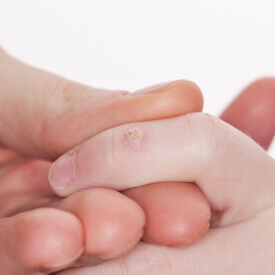- Procedure Name:
- Acne Service
For patients who suffer from mild to severe acne, we can create a personalized acne treatment plan to help reduce the pimples, blackheads, and cysts.
- Procedure Name:
- Actinic Keratosis Service
Actinic keratosis is caused by prolonged sun exposure, which can create rough and scaly patches of skin, skin lesions, or may become cancerous.
- Procedure Name:
- Cold Sores Service
A cold sore is a chronic skin disease caused by the herpes simplex virus that appears as a collection of blisters on reddened skin near the mouth.
- Procedure Name:
- Eczema Service
Eczema is caused by an allergic reaction or an immune system deficiency, which makes the skin become inflamed, discolored, dry, itchy, or thickened.
- Procedure Name:
- Hives Service
Generally caused by an allergic reaction or stress, hives appear all over the body as pink/red blotches, welts, or as a rash, and may vary in size.
- Procedure Name:
- Melasma Service
Typically caused by hormonal changes or sun damage, melasma or chloasma makes brown skin patches on different parts of the face, like the upper lip.
- Procedure Name:
- Moles Service
Healthy moles come in a variety of shapes and sizes; however, if you notice major changes in the shape or color, schedule an appointment immediately.
- Procedure Name:
- Psoriasis Service
Psoriasis happens when the body builds up skin cells too quickly and causes symptoms, like red, flaky, itchy, inflamed, and scaly skin that can scab.
- Procedure Name:
- Rashes Service
Rashes, like heat rash or contact dermatitis, cause inflammation, redness, or itchy skin because of fungal, parasitic, viral, or bacterial infections.
- Procedure Name:
- Rosacea Service
Rosacea is a chronic skin condition that makes the central part of the face look red and inflamed and usually occurs in middle-aged or elderly women.
- Procedure Name:
- Keratosis Service
Keratosis are noncancerous skin growths that tend to look like scaly moles or warts and usually appear on your back, shoulders, or chest.
- Procedure Name:
- Shingles Service
Shingles is a painful skin condition caused by the same virus as the chickenpox, and it creates an itchy, burning, or reddish rash with blisters.
- Procedure Name:
- Skin Tags Service
Skin tags or acrochordon are harmless, flesh-colored skin growths that commonly appear under the armpits, on the chest, neck, eyelids, or groin.
- Procedure Name:
- Tinea Versicolor Service
Tinea versicolor or pityriasis versicolor develops when the skin creates too much yeast, which causes the skin to look discolored, scaly, and patchy.














